Text
Between Existence and Self-Destruction: In Search of Meaning and Action - An Essay
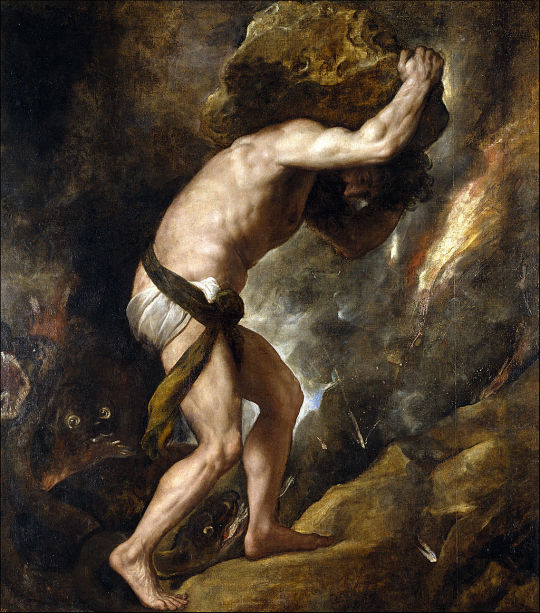
An individual state leading to a deep loss of meaning and a sense of the world's meaninglessness can be caused either by a series of fateful events leading to a strong sense of melancholy or by sudden insights into the insignificance of one's own existence while facing the universe's indifference.
In his 2000 essay "Melancholy and the Act", Slovenian philosopher Slavoj Žižek explores the complex connections between melancholy and action in human psychology and the social context. He challenges the conventional idea of melancholy as a purely passive or paralyzing state, arguing instead for a more profound analysis of this emotional condition. Žižek claims that melancholy is a special form of pain and sadness, often considered a state of stagnation and powerlessness. Contrary to this common perception, he argues that melancholy contains an unrecognized potential for action.

According to Žižek, melancholy can be an internal catalyst that stimulates individuals to look beyond existing limits and norms, developing new perspectives. The crux of his argument lies in the idea that, paradoxically, melancholy involves a kind of activity. It can be a source of creativity, leading people to engage more deeply with their suffering and derive new insights and energy. This process can result in transformative actions, whether on a personal level through self-reflection and self-overcoming or on a societal level through the pursuit of change and innovation.
This realization can lead to a profound alienation from one's own existence, potentially extending to thoughts of suicide. It often arises from the incompatibility between expected outcomes or the meaning of life and the actual chaotic nature of existence. This discrepancy can cause deep uncertainty and frustrate the search for a concrete life purpose.

Romanian philosopher Emil Cioran often grappled with the question of whether life is worth living in his writings. The depressions and insomnia he suffered from an early age strongly influenced his first book, "On the Heights of Despair," published in 1934. Cioran was obsessed with the idea of suicide, critically engaging with it in his aphorisms and essays. He argued that contemplating suicide is necessary for leading a better life. By confronting suicide, we confront the profound suffering associated with existence. This humility enables us to change the deepest aspects of ourselves.

Simultaneously, it reminds us that our peculiar human ability to contemplate suicide elevates us above everything else in nature or heaven. Cioran believed that failure governs the world, similar to the capricious God of the Old Testament. Despite his pessimism, actual skepticism, and nihilism, Cioran remained joyous in a peculiar way. It is not a pessimism that can be traced back to simple origins, as individual origins themselves are questionable.Most people go about their daily routines without being aware of the profound absurdity and randomness of their lives. They live in a system of cause and effect that provides a certain predictability and security. These people rarely experience their lives as a tragedy.

French writer and philosopher Albert Camus notes that most human actions are based on a logical error that ultimately leads to a loss of meaning. This loss of meaning can lead to self-doubt and a deep sense of meaninglessness that weakens motivation for personal endeavors.
The idea of suicide as a response to the absurdity of life, however, is considered by Camus, in contrast to Cioran, as a surrender to the incomprehensibility of the world. He argues that a stronger and more authentic stance is to be aware of the absurdity of life and still choose to live. Suicide is seen as an admission of the inability to understand or endure life. Camus uses the metaphor of Sisyphus to illustrate how one can confront the absurdity of life.
Sisyphus is condemned to roll a rock up the hill, only to see it roll down again repeatedly. Despite the apparent futility of this task and the absurdity of his existence, Sisyphus finds happiness and joy in this act. He rebels against the absurdity by despising it but simultaneously accepts it.

In the intricate web of existential musings we find a rich tapestry of perspectives on the human experience—ranging from the transformative potential within melancholy to the contemplation of suicide as a confrontation with life's inherent suffering, and finally, the defiant acceptance of the absurd. As we navigate this intellectual terrain, one overarching theme emerges: the profound beauty inherent in the struggle for meaning and the authentic experience of human existence.
Žižek urges us to reconsider melancholy not as a paralyzing force, but as a catalyst for innovation and societal change. Cioran's dark fascination with suicide invites us to confront the depths of our suffering, recognizing that in such confrontation lies the potential for profound transformation. In contrast, Camus advocates for a resilient defiance against the absurdity of life, finding joy in the very act of rebellion. Ultimately, these philosophical perspectives converge on a shared insight: that life's inherent absurdity need not lead to despair or resignation. Instead, the human spirit possesses the remarkable capacity to extract meaning from the seemingly chaotic and random nature of existence. In the daily struggle, in the pursuit of understanding and compassion, lies the essence of our shared humanity.

As we grapple with the existential questions posed by these philosophers, let us not merely dwell on the challenges and uncertainties but embrace the beauty of our collective journey. In the face of life's absurdities, we discover the resilience to persevere, the courage to confront our deepest fears, and the capacity to find solace in the shared human experience. The pursuit of meaning, in all its complexity, becomes a testament to the indomitable spirit that propels us forward, even in the shadow of existential uncertainty.
In this view, it is crucial for people to continue living despite the absurdity of life and become aware of human conditions to develop compassion for the suffering of others.
Despite the apparent absurdity of life, beauty lies in the daily struggle and in the moments of genuine experience that human existence has to offer.
Davis Jahn
#philosophy#article#essay#personal essay#slavoj zizek#albert camus#emil cioran#nihilism#existentialism#self destruction#absurdity#absurdity of life#writing#creative writing#literature#melancholy#melancholy and the act#tw depressive#sisyphus#art#pessimism
12 notes
·
View notes
Text
Wearing Time: Carpe Diem and the Artistry of Anti-Fashion (Pt. 2 / 2)

Continuing since part one of this article was simply too long.
///
Luca Laurini
Luca Laurini, distinguished from his peers Cecchetto and Amadei, directs his focus exclusively on clothing within his label Under Construction, eschewing leather and accessories entirely. Established in 2003, Under Construction stands out as one of the most prominent among the four labels spearheaded by the former Carpe Diem design team. While guided by Altieri at Carpe Diem, Laurini honed his skills in knitwear, and his vision for the craft of knitwear and ready-to-wear fashion crystallized during the creation of L'Maltieri and Linea.
Unfortunately I couldn't find any picture of Laurini himself. More space for his creations!


Carpe Diem's prior emphasis on leather processing provided Laurini with the platform to express his ideas about knitwear and ready-to-wear pieces in a manner that was both disruptive and experimental.
Post-Carpe Diem, Laurini founded Under Construction with the explicit intent of challenging conventional perceptions of knitwear. The label's name itself implies that Laurini's collection consists of pieces intentionally designed to appear seemingly unfinished. Employing modern technologies and adopting an architectural approach, Laurini's designs are characterized by modern tailoring and urban minimalism.

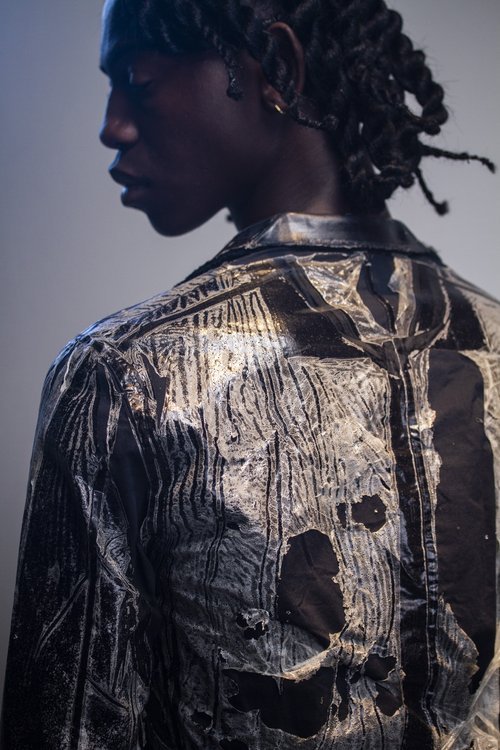
The Under Construction collection spans from unconventional white T-shirts with uneven seams to black button-down shirts featuring non-traditional stitches. It includes tapered pants with flared crotches and gathered ankles. Laurini remains true to his roots, paying homage to Carpe Diem with a long-sleeved shirt adorned with a blue and white print reminiscent of muscle fibers. These garments embody the philosophy of Label Under Construction, marked by the fusion of technology and architecture with a steadfast focus on craftsmanship.

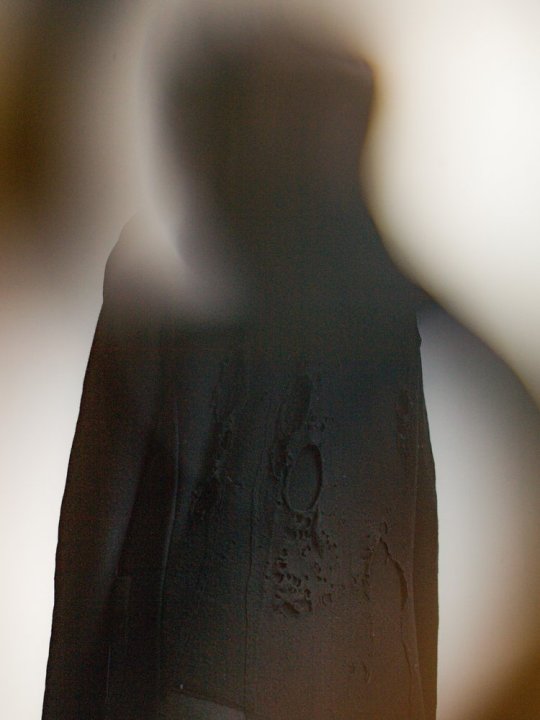
Through his label Under Construction, Luca Laurini demonstrates that, despite the absence of leather and accessories, he has the ability to craft an impressive array of modern and urban clothing pieces. These pieces stand out for their intentional imperfections and artisanal refinement, showcasing Laurini's commitment to pushing the boundaries of conventional fashion norms.
Sara Lanzi
Sara Lanzi, perhaps the lesser-known member of the Carpe Diem family, specializes in the transformative art of clothing, driven by her deep appreciation for knitwear. Serving as the steward of the Linea label at Carpe Diem from 1999 to 2003, Lanzi, a former student of contemporary art, sees the human body not merely as a reference point but as an object for "essential and transformative pieces." Her foray into the fashion world commenced with the presentation of her eponymous women's fashion collection in Paris in 2004.

Lanzi's overarching goal is to harmonize aesthetics and functionality, manifested through monochrome pieces with a strong emphasis on versatility. The Fall/Winter collection of 2006 showcased her innovative prowess, featuring garments that could be worn in various ways—a knee-length dress with a scarf serving as a sleeve or an unevenly draped ribbed tank that seamlessly transformed into a sweater with a collar. Another notable creation was Lanzi's A-line velvet dress, radiating monastic elegance from the front yet revealing a seductively transgressive deep back neckline upon closer inspection.

Sara Lanzi's current collections adhere to a similar concept, accentuating the duality of garments with a more subdued look tailored for the "natural woman." Lanzi's designs exemplify her ability to seamlessly unite aesthetics and functionality, highlighting the duality and versatility of clothing as mediums for personal style and self-expression. Despite her relatively lower recognition within the Carpe Diem family, Sara Lanzi has carved out a distinct place in avant-garde fashion through her inventive approach to knitwear and fashion, proving that her creative ingenuity transcends the boundaries of conventional recognition.

Taichi Murakami (Honorable Mention)
Taichi Murakami, the former pattern maker at M.A+ and the founder of his eponymous brand, stands as a prominent figure in the realm of avant-garde fashion. In the mid-2000s, the Gothic clothing movement (here's a brief reference to my blog article "How Post-Punk Influenced Nowadays Fashion") served as a global inspiration for designers, including Rick Owens in North America, and labels such as Julius, Attachment, Devoa, and The Viridi-Anne. While many of these designers share a lineage with Carpe Diem in some way, Taichi Murakami distinguishes himself through his unique and innovative work.

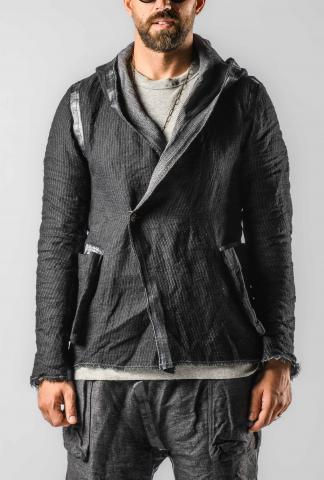
During his studies in Tokyo, Murakami gained experience at Lift, a multi-brand boutique in Daikanyama known for its artisanal brands like Carol Christian Poell and M.A+. Fascinated by Maurizio Amadei's intricate patterns at M.A+, Murakami aspired to work there one day. His goal became a reality after completing his studies when he secured a scholarship to study pattern making in Milan. In 2009, he joined Amadei as a pattern maker at M.A+, where he imbibed a flexible approach to the design process, a departure from the strict Japanese mentality. Amadei's encouragement for Murakami to experiment beyond traditional limits, creating prototypes from various materials, became a formative aspect of his creative journey.

After gaining valuable experience at M.A+, Murakami felt prepared to establish his own fashion line. In 2012, he unveiled his inaugural collection in Tokyo. Murakami identifies more as a clothing developer than a conventional designer, displaying an obsessive commitment to sourcing the right materials before embarking on the design process. With local connections granting him access to adventurous fabric manufacturers, Murakami's refined patterning adapts to the behavior of each fabric, allowing him to shape each piece in unique ways—resulting in garments that are truly one-of-a-kind.

Taichi Murakami's distinctive approach resonates throughout his collections, positioning him as a fitting successor to Altieri and Amadei's design ethos. His work epitomizes a successful fusion of traditional craftsmanship, experimental design, and the freedom to challenge established norms, marking him as a trailblazer in the avant-garde fashion landscape.
///

Carpe Diem's indelible mark on artisanal fashion stands as a testament to Altieri's visionary leadership and the collective creativity of its members. Despite the surging interest in artisanal avant-garde fashion, the prospect of a Carpe Diem resurgence remains uncertain. Nevertheless, the dissolution of Carpe Diem has not dimmed the creative fervor of its members. Each, including Altieri with his "Vnapersona" project, ventures beyond the realm of fashion, infusing art into their pursuits.
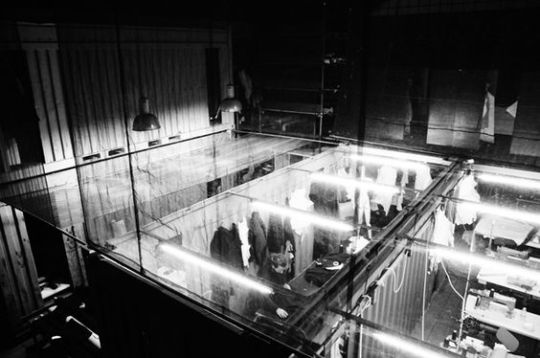
Altieri, Amadei, Cecchetto, Laurini, and Lanzi have not only pioneered avant-garde fashion but have also left an enduring legacy, fostering a continued influence embraced by various labels and designers. Their artistic imprints endure, evident in contemporary collections two decades later. The Carpe Diem collective remains a pivotal milestone in the annals of artisanal fashion, its impact echoing through time. As we look to the future, the anticipation lingers for potential developments and projects from Altieri and his colleagues, underscoring their perpetual influence on the ever-evolving landscape of creative expression.
Davis Jahn
#fashion#art#avant garde#avant garde fashion#artisanal#artisanal fashion#carpe diem#maurizio altieri#ma+#maurizio amadei#simone cecchetto#augusta#a1923#m_moriabc#linea#layer-0#anti fashion#writing#article#philosophy#gothic#leather#leather boots#leather garments#leather jacket#garment#taichi murakami#sara lanzi#luca laurini#labelunderconstruction
33 notes
·
View notes
Text
Wearing Time: Carpe Diem and the Artistry of Anti-Fashion (Pt. 1 / 2)

In today's article, I want to tell you something about what I consider the most important and influential artist collective in avant-garde fashion.
A collective whose artists, their labels, and their design language have impressed me so much that it has completely changed my perspective on how clothing is created, what its purpose really is, and the impact it can have.
///
Carpe Diem, an avant-garde designer collective, was founded in 1996 in Perugia, Italy, by Maurizio Altieri. There are conflicting reports on the founding year, with sources mentioning 1994, 1998, and 1999 (the latter mentioned by Maurizio Amadei of M.A+ in a podcast with Lucentement). The visionary minds, particularly Maurizio Altieri, initially specialized in leather design, working with materials such as horsehide, cowhide, and anaconda.

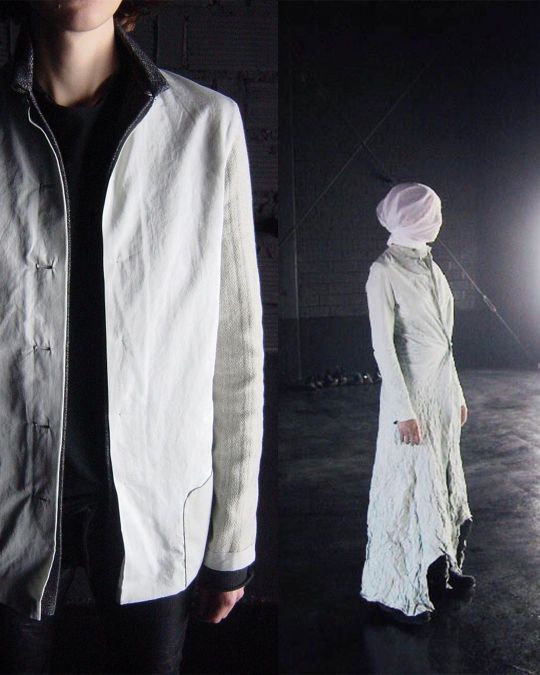
These materials underwent intricate hand treatments, including washing, distressing, crushing, and burial in the ground for months. Carpe Diem quickly established itself as an avant-garde trailblazer, gaining recognition for its commitment to quality and craftsmanship. Originally concentrating on shoes, the brand later expanded its offerings to include clothing.
In 2006, Carpe Diem disbanded due to its increasing mainstream popularity, paving the way for other brands to follow its innovative path. This marked the peak of Carpe Diem's fame, with celebrities like Brad Pitt seen wearing their leather shirts. The surge in investor interest eventually led to Maurizio Altieri abandoning the label.

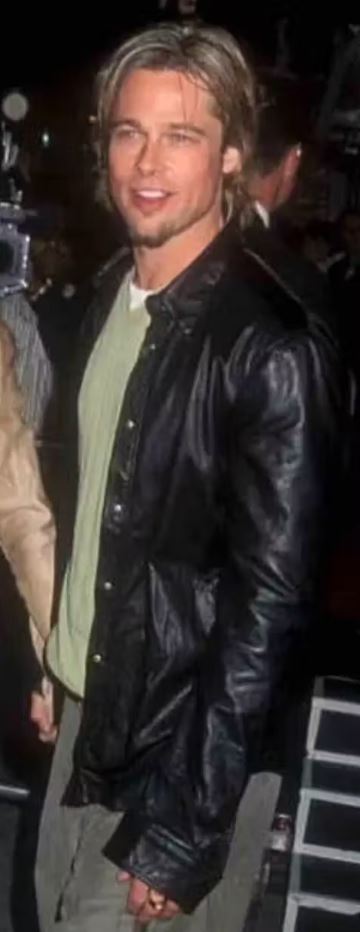
In recent years, Carpe Diem has been acquired by a Japanese company, resulting in the reissue of some designs and the introduction of new ones. However, signs indicate that Altieri and his colleagues are no longer actively involved in the design process.
Carpe Diem's influence extends to avant-garde brands like Carol Christian Poell, Boris Bidjan Saberi, Layer-0, and others, incorporating designs such as twisted seams, dropped-crotch trousers, asymmetric plackets, and J-cut pants. The brand's collections, including L'Maltieri (knitwear), Sartoria (made-to-measure), and Linea (jackets, pants, and T-shirts), aimed to diversify offerings.
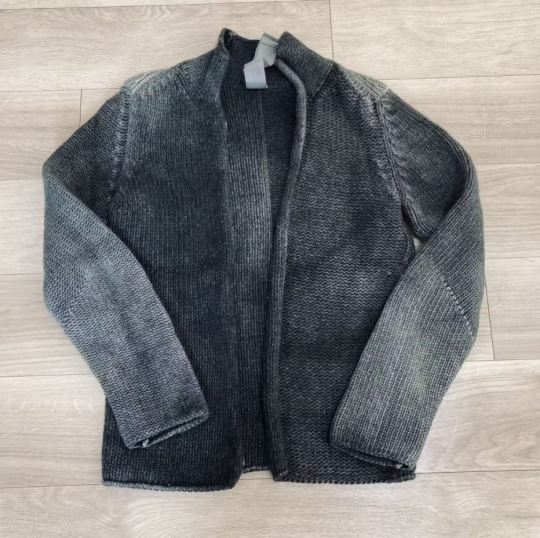
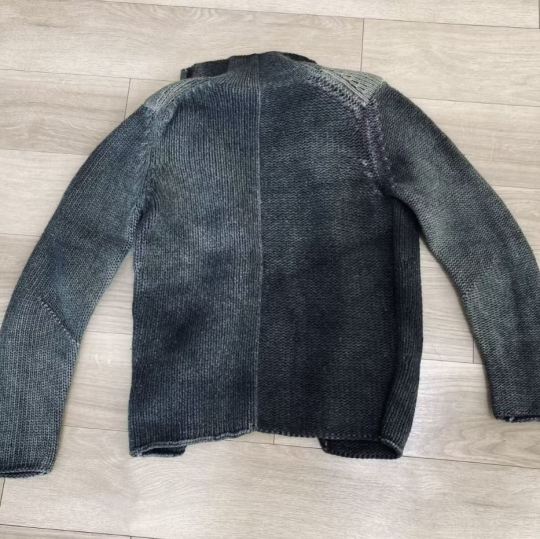
The Linea collection, utilizing a 3x3 modular system, features interchangeable and conceptually connected laser-cut jackets, cotton pants, and T-shirts.

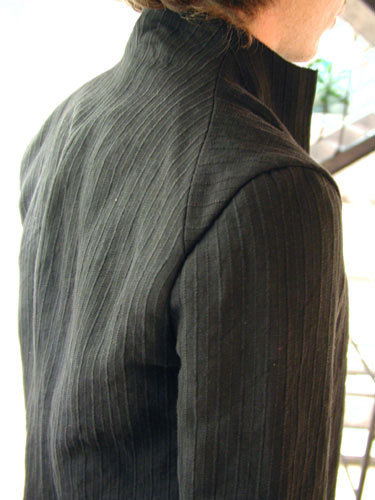
Sartoria, a customized line derived from Linea, maintains the "arte povera" aesthetic with crumpled, washed, and treated leather. Custom items required visits to a Parisian garage for fitting and digital photography, and delivery took 60 days, utilizing leather buried in the deserts of Afghanistan.


The distinctive feature of hanging garments on meat hooks pays homage to the label's origins as a leather house. The Sartoria line has evolved into the fifth line named Anatomica, propably my favorite collection of Carpe Diem.
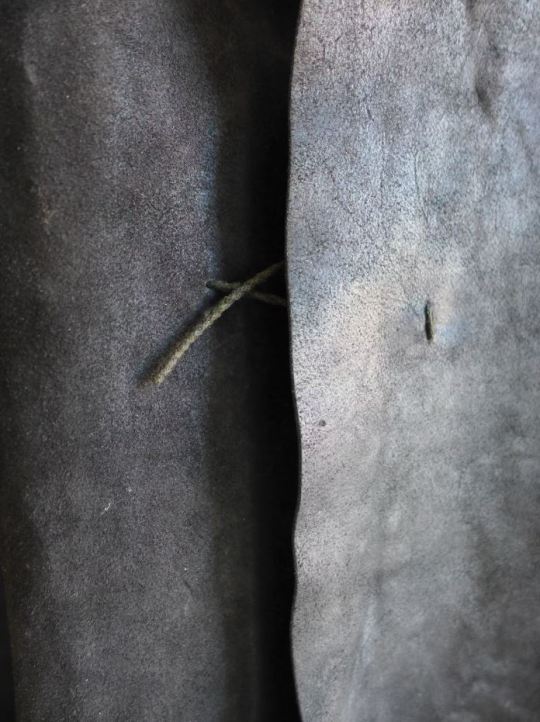
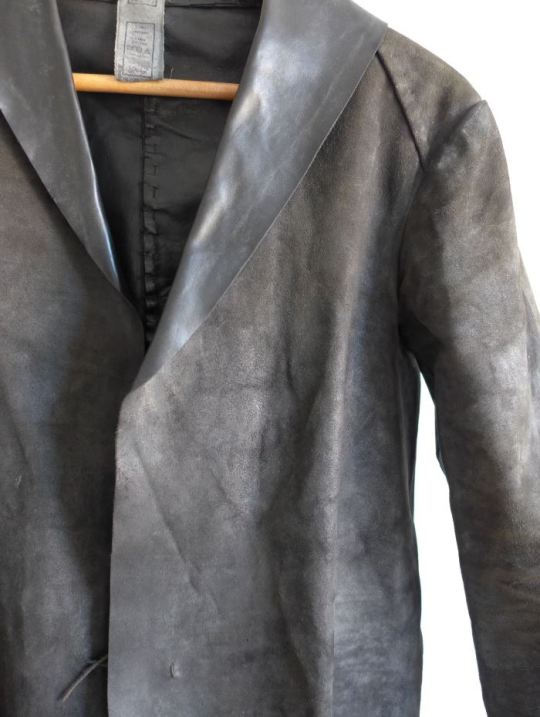
Now, let's introduce the creative minds behind Carpe Diem in detail:
Maurizio Altieri
Maurizio Altieri, the visionary founder of Carpe Diem, is a perfectionist who brings an academic background in business and law to the world of fashion. His professional journey began at Chrome Hearts, where he honed fundamental skills in craftsmanship and leather treatment. In 1996, Altieri departed from Chrome Hearts to establish Carpe Diem, driven by a philosophy to craft timeless, useful, and handmade pieces from the finest materials.

Altieri's unique approach materialized through the application of distinctive treatments and washes, setting his creations apart. Notably, Maurizio Altieri rejects traditional editorials and advertising, firmly believing that the craftsmanship and quality of his pieces should speak for themselves. This commitment to craftsmanship is vividly demonstrated through a series of collections known as the "Continues Collection," showcasing an enduring dedication to the art of craftsmanship and the creation of timeless fashion experiences.
Post-Carpe Diem, Altieri embarked on various projects, including m_moriabc, active in the fashion world since 2012.
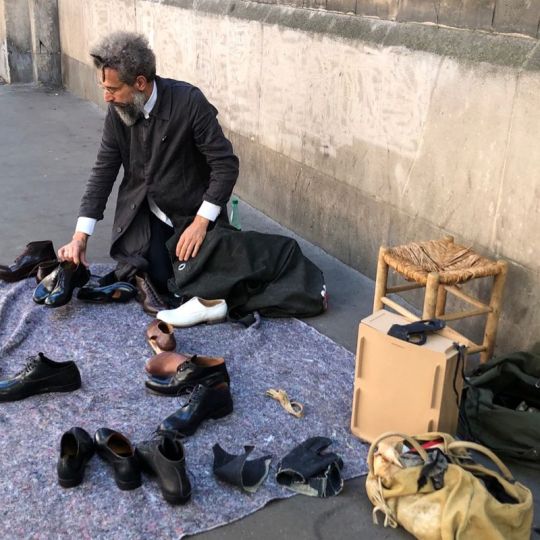
Beyond demonstrating Altieri's exceptional talent for creating memorable brand names, m_moriabc is renowned for its handmade footwear crafted through special Norwegian craftsmanship. Altieri's ambitious pursuit involves capturing the essence of time itself in his creations, symbolized by the names A, B, and C, each representing distinct lines that embody aspects of the past, present, and future.

Avantindietro, launched in 2009, stands out as another notable project, offering a minimalist response to Carpe Diem's initial collection. In a collaborative effort two years later, Altieri partnered with Alessio Zero, the Italian designer behind Layer-O, to produce a small offering of shoes made from leather buried years earlier, adding a fascinating narrative to the creations.
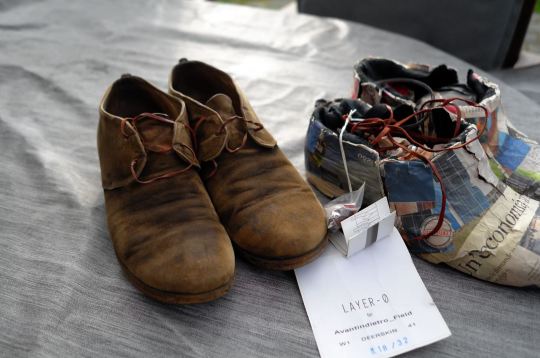
Altieri's current venture, the art project Vnapersona, further underscores his dedication to pushing artistic boundaries. Through these endeavors, Maurizio Altieri continues to leave an indelible mark on the fashion landscape, weaving together elements of time, craftsmanship, and innovation.
Maurizio Amadei
Maurizio Amadei played a pivotal role in shaping the distinctive identity of Carpe Diem's leather products, encompassing accessories and jackets. During his tenure as a designer at Carpe Diem, Amadei demonstrated a unique exploration of human anatomy, sculpting pieces to follow the lines of the body's muscles. This innovative approach not only left an indelible mark on his designs at Carpe Diem but continued to influence his subsequent work.
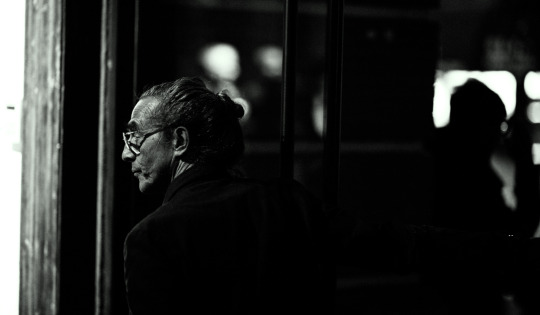
Following the conclusion of Carpe Diem in 2006, Maurizio Amadei founded M.A+ as a spiritual successor to the renowned "Continues Collection." The unmistakable parallels between the two collections are evident in Amadei's inaugural M.A+ collection, where a standout piece was a large shoulder bag crafted from a single seamless piece of leather—a hallmark reminiscent of Carpe Diem. The introduction of the cross motif in this collection became the emblem of Amadei's design ethos, defining sought-after pieces like the 925 Sterling Silver Cross Belt.


M.A+ seamlessly carried forward many of the distinctive design techniques for leather while integrating cozy cotton fabrics into seamless one-piece silhouettes. Amadei's deliberate use of blunt knives for cutting and processing garment hems serves as a nod to Altieri's design philosophy. The overarching objective was to envelop the wearer in a second skin—an uncomplicated construction that is seamless yet refined.


In the present day, M.A+ stands out with flawlessly crafted garments in an array of materials such as silk and satin, garnering significant attention for their luxurious functionality. The allure extends to the patterned garments within the M.A+ collection, complementing the outstanding leather and shoe products. Amadei's design DNA is deeply rooted in principles of simplicity and minimalism, with stitches employed only when necessary. This commitment to minimalism is further emphasized by the absence of tags conveying fabric or size information—a testament to Maurizio Amadei's sophistication and meticulous attention to detail in his designs.

Simone Cecchetto
Simone Cecchetto, during his tenure at Carpe Diem, brought an exceptional perspective and creative flair to the realm of shoe and accessory design. Influenced by his background in body art, Cecchetto delved into the "Second Body" project of Sartoria or Anatomica at Carpe Diem, an exploration of the concept of leather as a second skin on the human body.
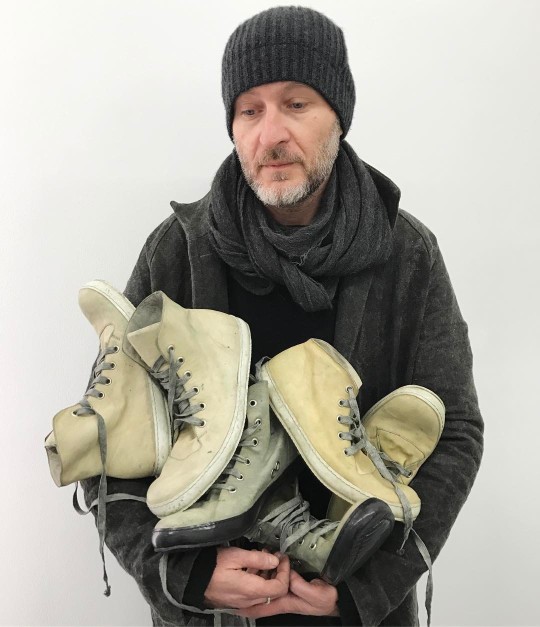
His visionary approach extended to innovative ideas such as integrating chips into leather jumpsuits, enabling the tracking of digital images and movements—a seamless fusion of traditional craftsmanship with modern technological elements.
Despite Maurizio Amadei's primary responsibility for leather goods, Cecchetto collaborated directly with Altieri to optimize their products. Despite lacking formal training as a shoemaker, Cecchetto's deep passion for shaping leather led him to assume the role of footwear design at Carpe Diem, allowing him to preserve the brand's legacy in shoe design.
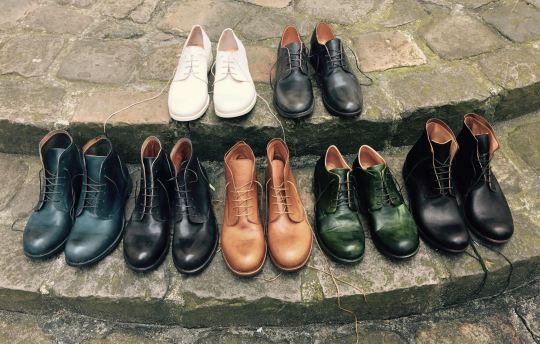
Following the closure of Carpe Diem, Cecchetto sought refuge at Rick Owens briefly, only to realize a misalignment with Owens' avant-garde aesthetic. This experience served as a catalyst for him to chart his own course, resulting in the establishment of his label, Augusta, later renamed A Diciannoveventitre and A1923. The name Augusta pays homage to his grandmother, embodying the brand's principles of simplicity inherited from her. A1923 revolves around the principle of Wabi-Sabi, a Japanese philosophy seeking beauty in natural irregularities.
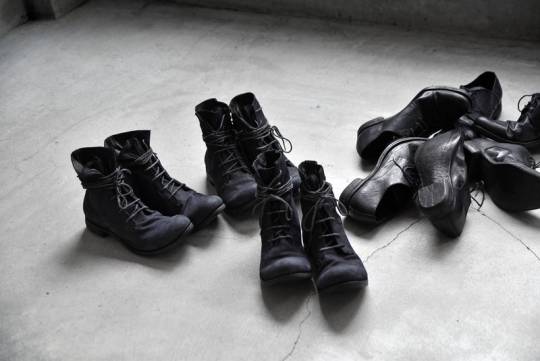
Cecchetto's unwavering dedication is evident in the meticulous sourcing and processing of leather, compensating for his lack of formal training with experimentation and craftsmanship. A1923 stands out with its niche offerings, featuring handmade leather shoes and bags for men. The collection includes distinctive elements such as boots with double zippers and sneaker-boot hybrids, adorned with worn-out laces and intense colors. This testament to Simone Cecchetto's ability to preserve creative integrity while forging his own path underscores his continued contribution to the creation of influential and unique designs.
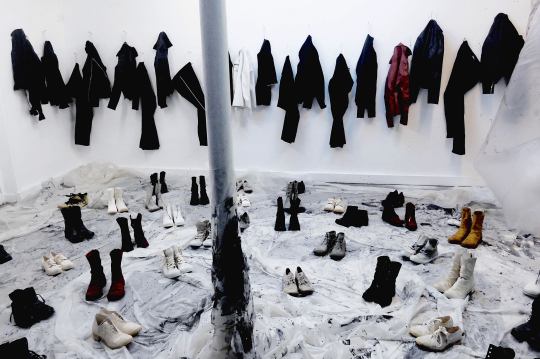
///
Part two is coming in a couple of days!
Davis Jahn
#fashion#art#avant garde#avant garde fashion#artisanal#artisanal fashion#carpe diem#maurizio altieri#ma+#maurizio amadei#simone cecchetto#augusta#a1923#m_moriabc#linea#layer-0#anti fashion#writing#article#philosophy#gothic#leather#leather boots#leather jacket
48 notes
·
View notes
Text
How Post-Punk Influenced Nowadays Fashion
It's been a long time since Malcolm McLaren opened his boutique "Sex" in the 1970s, and Vivienne Westwood equipped the Sex Pistols with their iconic outfits and sent them out onto King's Road. The approach back then was: "Being anti at all costs, against the establishment." Eventually, it turned into "Do It Yourself." It was fashionable because it tried not to be fashionable.
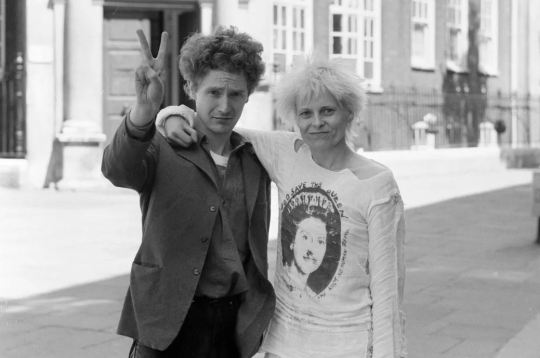
A few years later, members of Joy Division met at a Sex Pistols show in 1976 and started as a punk band. However, it soon evolved into something entirely different. When you listen to old Joy Division songs like "Warsaw" you can clearly hear the punk rock influences, but the band quickly started to deviate from the common motifs of the genre.

The music slowed down. The noisy guitar sound of punk was subdued to appear more intriguing, and Ian Curtis's existentialist lyrics, influenced by authors like Fyodor Dostoevsky, Jean-Paul Sartre, and Franz Kafka, focused not on chaos, rebellion, and hedonism but reflected his fears, physical sufferings, and the absurdity in the face of the zeitgeist and social influences of the 1970s and 1980s, marked by changes and political uncertainty, forced Joy Division to experiment.
They created not only something musically unique but also something aesthetic. For example, with their monochromatic designs on their album covers for "Unknown Pleasures," which is probably the third best-selling T-shirt in fast fashion stores, alongside Nirvana and the Ramones T-shirts. Joy Division ended in 1980 after Ian Curtis hung himself in his kitchen. They not only helped shape the sub-genre "Post-Punk" but were also the unofficial soundtrack of existentialism. The soundtrack that made Joy Division's music feel so genuine. Because it was genuine.
Of course, in the 1960s, there were artists who processed existential themes in their lyrics. A good example would be Lou Reed of The Velvet Underground, who, heavily influenced by literature, dealt with many serious topics in his lyrics. However, it wasn't just their music; it was also their appearance that defined Joy Division. On stage, in promo pictures, and in interviews.
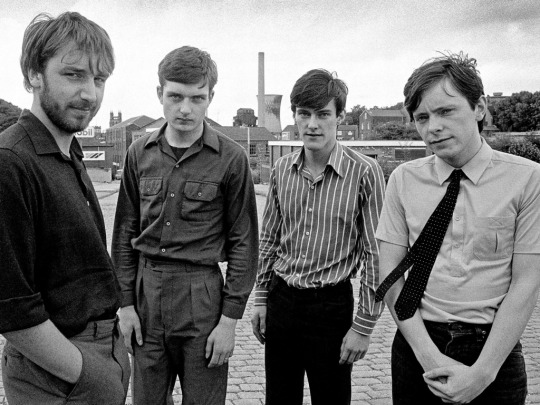
Ill-fitting shirts from army surplus stores, old man's pants, a few pair of derbies, big raincoats. Everything that was atypical for the punk movement, and many other artists, including The Cure, The Smiths, Siouxsie Sioux and the Banshees, Bauhaus, Alien Sex Friend or Sisters Of Mercy, went in the same direction: Through a dark, introspective, sometimes minimalist, but avant-garde aesthetic, they set themselves apart from punk and society, and looking at bands from the Post-Punk Revival from the 2000s like Interpol, Iceage, Molchat Doma, Boy Harsher, or Cold Cave, it quickly becomes apparent that this aesthetic has proven itself for almost 50 years.

This trend was, of course, not only an inspiration for musicians but also for artists, fashion designers, architects, and many more.
One designer that immediately comes to mind is Antwerp-Six member Ann Demeulemeester from Belgium, whose influences clearly evoke artists like Siouxsie Sioux or Patti Smith but also the playful goth look of the 1980s era by Rei Kawakubo (Comme Des Garcons) or Japan's goth father himself: Yohji Yamamoto.
Her story begins in Antwerp, where she initially studied at the Royal Academy of Fine Arts and quickly got to know the other Antwerp-Six members. She and the Antwerp Six presented their collections at Fashion Week and quickly became highly esteemed designers, now considered among the greatest designers of all time. Many of Ann's collections featured songs by Patti Smith, Nick Cave and the Bad Seeds, or The Velvet Underground.
This alone shows the influence of Post-Punk on Ann Demeulemeester's designs. Her asymmetrical cuts and draperies, her monochromatic, Kawakubo and Yamamoto-inspired, mainly black designs were groundbreaking, bringing avant-garde ideas in a consumable form to the people.

Another noteworthy designer from Antwerp is Raf Simons and his collections. Raf Simons grew up in the 1980s and was deeply rooted in the punk and goth subculture, whose influence can be traced in many of his collections or directly referenced by Raf himself. Notable are his A/W96 collection, which includes all-black looks with jet-black dyed hair and long black overcoats, his A/W99 collection with direct Joy Division references, black cloaks, and Gothic looks on the runway.
Raf's most famous collection A/W02-03 Riot Riot Riot! A coveted collection featuring cutoff and distressed hoodies, repurposed military garments, and loaded with punk references through patches. Among them, a bomber jacket with a patch depicting the self-harming Richey James Edwards of the Manic Street Preachers.
Obviously, his A/W03-04 Closer collection with a direct collaboration with Peter Saville, the graphic designer of Factory Records, featuring iconic graphics from Joy Division, New Order, and more.
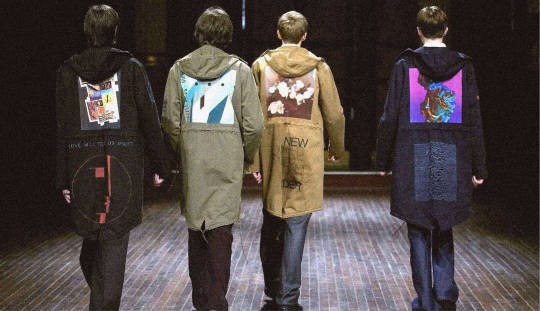
These two examples of designers actively influenced by this culture are just a fraction. These designers were punks or goths themselves. People influenced by the postmodern identity of the time and post-Soviet tradition. Post-Punk fashion embodies the music of the time it emerged and aligns with deeper considerations. So, it didn't take long for the entire fashion world to embrace this style, partly because "Gothic" and "Punk" became more mainstream, and partly because its aesthetic components were easy to design due to their often penetrating monochromatic minimalism.
Not only goths or avant-garde designers like Ann Demeulemeester, Martin Margiela or Rick Owens, deeply connected to the style and subculture of that time, but also luxury designers like Prada, Balenciaga or Bottega Veneta are incorporating it.
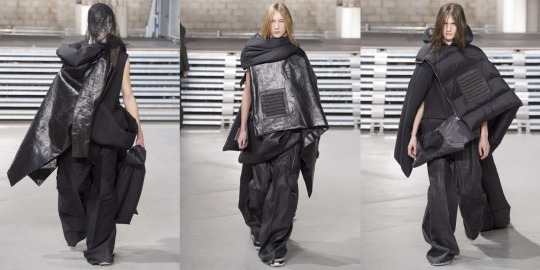
The look is romantic, dark, longing for death, partly edgy, partly overloaded. All aspects that exude a constant attraction from the clothing, as people are often drawn to "the other," sometimes even "the forbidden." The look can also be easily detached from the actual Post-Punk/Goth culture - something postmodernity excels at. The style of the Gothic culture can be perfectly broken down into its individual parts and used as a kind of aesthetic sandbox. Here a thick heavy chain, there's a choker, here big long earrings, add a pair of black high combat boots, a slim-fitted mesh shirt, and preferably paint the nails, and you're done. All things that houses like Prada, Marni, Bottega Veneta, for example, have done right.


What we see today in the Post-Punk-influenced style and what we interpret as avant-garde should actually be considered a modern tradition. Post-Punk fashion embodies the music and the spirit of the time it emerged and aligns with deeper existential discourses. The design language and atmosphere of that time are now used by traditional fashion houses to incorporate young designers into their ranks and increase their relevance, merely fulfilling their quota to be considered part of the traditional fashion pipeline of LV, Dior, Gucci, and Balenciaga. The avant-garde cannot be seen as so established. The rapid growth these companies have undergone to make billions and the inheritance method of finding a designer to take over the house are enough to profile themselves as industry magnates.

In a world where fashion constantly reinvents itself, the enduring legacy of post-punk culture persists as a modern tradition. From the raw, rebellious sounds of bands like Joy Division to the avant-garde designs of Ann Demeulemeester and Raf Simons, the essence of post-punk continues to captivate hearts and minds. As luxury fashion houses seamlessly incorporate this style, it's vital to recognize the roots and the countercultural spirit that birthed it.
The romantic, dark allure, the edgy overtones – they all beckon, inviting us to explore "the other," even the forbidden. Yet, amidst the mainstream adoption, a call echoes for authenticity. True avant-gardists, whether musicians or designers, carve their paths, declaring, "This is our thing." The new avant-garde emerges not just from runways but from the pulsating hearts of those deeply rooted in their subcultures.
In a world dominated by industry magnates, the journey of post-punk fashion from the underground to luxury houses is a testament to its enduring power. As we witness the evolution, let us celebrate the genuine, the authentic, and the countercultural voices shaping the new avant-garde.
So, whether draped in asymmetrical cuts or sporting a rebellious attitude, the message is clear: The post-punk spirit lives on, and the next wave of avant-garde creators is ready to make their mark, confidently declaring, "This is our thing."
Davis Jahn
#post punk#gothic#fashion#ann demeulemeester#prada#balenciaga#punk rock#punk#writing#philosophy#art#avant garde#avant garde fashion#raf simons
72 notes
·
View notes
Text
Elena Dawson: The Art of Artisanal Fashion
Today's blog post marks a special moment for me. Not only because it's my first on Shifting Patterns, but also because I deeply admire and enjoy the work of this designer. So much so that my wife and I even got married in her garments. Today, I want to introduce you to Elena Dawson.

Elena Dawson, a London-born fashion designer for menswear and womenswear, keeps much of her personal life under wraps.There's no existing website anymore, and her former blog is no longer accessible. Only a Instagram account with a couple of posts and a contact email serves as a point of contact. It all somewhat reminds of the enigmatic Paul Harnden, doesn't it? But we'll get to that later. She studied Art and Fashion Design at the University of Brighton and worked as a seamstress after completing her degree. At that time, she said, "I draw on the knowledge I learned at the tailors still now in the way I make clothing."
In 2000, she co-founded the clothing line "Paul Harnden Clothiers" with her ex-partner Paul Harnden. She was an integral part of the design, concept, and business until 2009 with Paul Harnden, who was primarily known under the name "Paul Harnden Shoemakers" until then, when she decided to establish her own clothing and shoe label in East Sussex. Her studio is located there as well. Despite Dawson's departure, Paul Harnden's ready-to-wear collections continue to this day. Since 2009, the brand has naturally grown, but Dawson still produces her clothes and shoes herself, supported by a small team. Everything is produced in-house in multiple studio spaces, but all is handmade.
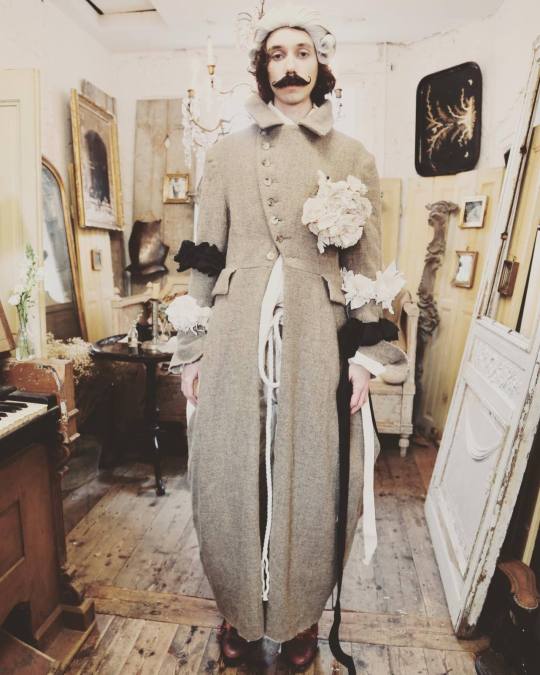
The aesthetic of Dawson's work at Paul Harnden and her own brand has definitely evolved over the years. Paul Harnden, who is now known not only for his shoes but also for his blazers/jackets, coats, trousers, and shirts, has a rather clean cut and neatly sewn edges. On the other hand, Elena Dawson has a rather rough look and is known for her unfinished seams with dangling fabric scraps.
It's sometimes hard to describe, but she has a very romantic, poetic, Victorian look that partly reminds me of Tim Burton movies.
When I put on one of her beloved blazers, I often feel like a part of Bertolt Brecht's Threepenny Opera, almost like a wardrobe from the 19th century. I own 2 blazers (linen and wool), 1 linen shirt, 2 pants (linen and cotton), and silk accessories from Dawson. My wife has a mix of a coat and dress. All her clothes are labelled with the classic "Elena Dawson - Made In England" label and the washing/material information written in her really unreadable handwriting with a Sharpie.

The coats and blazers (mostly) feature beige/white cotton lining, and the classic look, often seen online, is achieved by rolling the sleeves backward, exposing the lining through the open seams. She works with a dress form, sculpturing everything, and only uses natural materials. Her favorites are English wool, Indian cotton, Irish linen, and Chinese silk. She describes her work as follows: "When you work on alterations you are really tearing the guts out of the garment, performing a sort of autopsy—you really get to see a garment at its most vulnerable point. Observing this state of semi-deconstruction in the making of a garment or shoe is what I like to retain in my finished work."
You'll rarely get the chance to buy her pieces online, as there are hardly any retailers offering her items online. She mentioned: "We don't do much press or social media work and we don't sell online at all. I'm not against that. It's just not the brand's main job." Elena Dawson limits the maximum order quantity and carefully chooses her retailers. She prefers to keep the brand small, and even on classic online platforms like Grailed, Vestiaire Collective, or eBay, you won't find many of her items used.
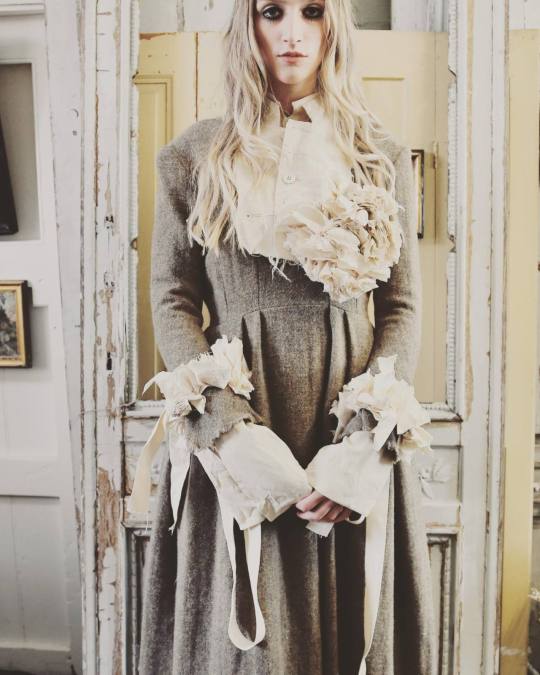
I highly recommend visiting a retailer near you for the experience alone and trying on the clothes in-store. In my case, it's Harvey's in Berlin. However, the most well-known point of sale is probably Dover Street Market in London, with whom she has a strong relationship, as Dover Street Market has actively supported her brand from the beginning, granting her a significant presence there. In Tokyo, I was also able to find her pieces at DSM and at the Comme des Garcons Pocket Store.
The result is garments full of personality that evolve over time alongside one's own personality, incomparable to any other looks consumed and worn nowadays. Each piece, crafted by her hands, is unique, and I'll tell you, the first time I wore an Elena Dawson blazer at Harvey's in Berlin, it resonated with me. The look, the weight, the fit… it felt like a second skin, and over the course of 2 years, seeing how it aged with me, it became more like an extension of myself each day.

Here's to Elena — may your artistic journey continue to inspire and captivate for years to come!
Davis Jahn
13 notes
·
View notes
Text
About
"Cogito, ergo sum. (I think, therefore I am.)" - Descartes
This blog is a sanctuary for my love of art, a haven for the artists I admire, and an arena where my thoughts, even in their recurring conflicts, can roam freely. It's not about self-promotion in any narcissitic way but providing space for each piece, song, or publication to speak for itself. Through interviews, introductions, reviews, and articles, I aim to give these creators a stage, making their work more accessible.
"Art is magic delivered from the lie of being truth." - Theodor W. Adorno
Your support means the world. If you resonate with the posts, your engagement is deeply appreciated. If you're an artist seeking collaboration or wish to share your work, I'd love to hear from you.
Expect new content once or twice a week.
Davis Jahn
2 notes
·
View notes